2016 Structural Awards winners announced, Grandview Heights Aquatic Centre wins Supreme Excellence
By Justine Testado|
Friday, Nov 11, 2016
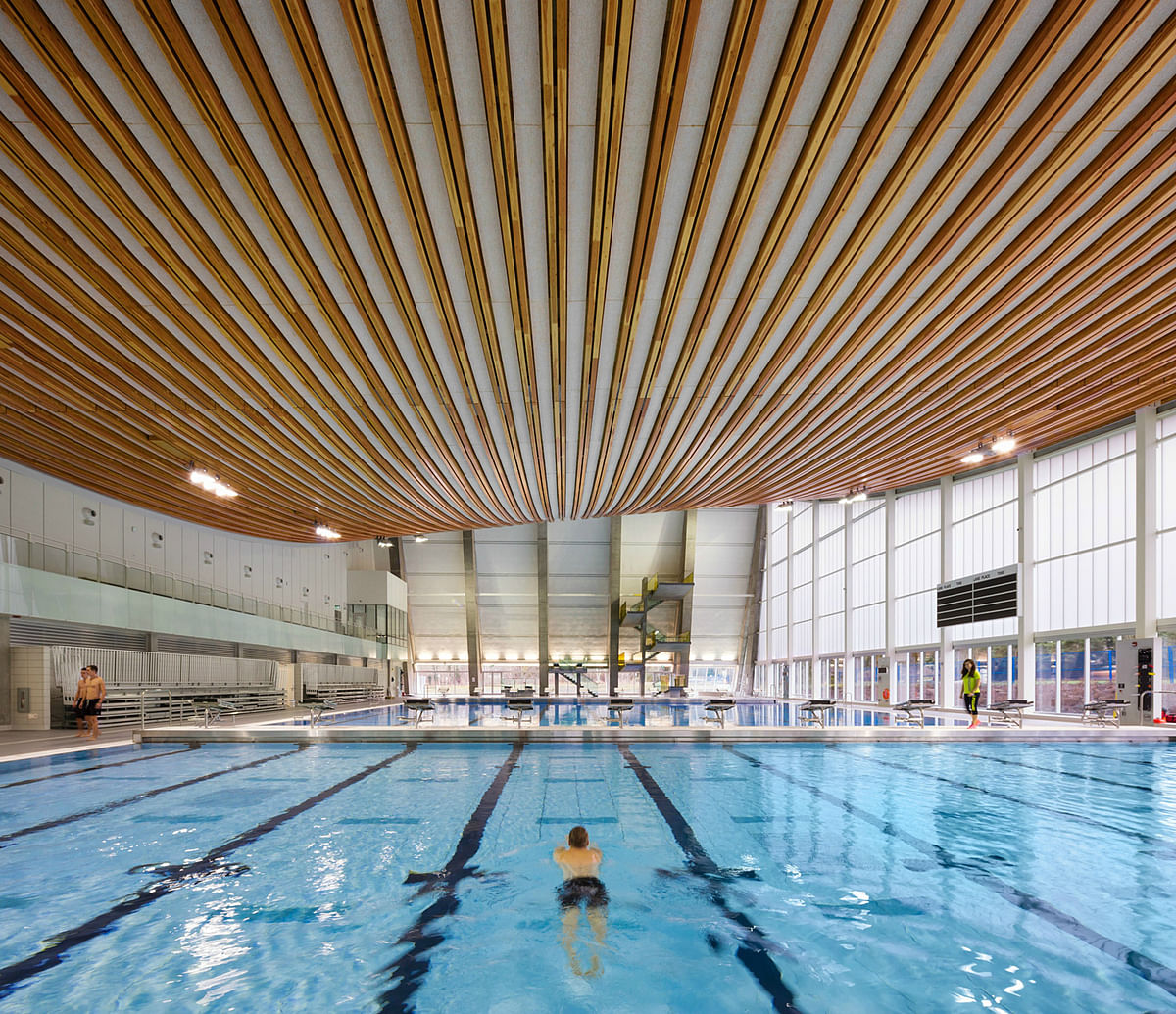
Related
The Institution of Structural Engineers celebrated the winners of their 2016 Structural Awards today during a ceremony at The Brewery in London. Regarded as the industry's most prestigious awards competition, the Structural Awards honors the innovations and crucial roles of structural engineers worldwide.
From this year's shortlist, eleven category winners were announced. The Grandview Heights Aquatic Centre in Surrey, Canada — engineered by Fast + Epp — was crowned with the coveted Supreme Award for Structural Engineering Excellence, the Institution's highest accolade. In the last two years, the Supreme Excellence title went to the Singapore Sports Hub and The Glass Lantern at Apple Store Istanbul.
Have a look at this year's winning projects below.
Supreme Award for Structural Engineering Excellence AND Award for Community or Residential Structures: Grandview Heights Aquatic Centre - Surrey, Canada.
Engineered by: Fast + Epp.

Project summary: “Engineered by Fast + Epp, the Grandview Heights Aquatic Centre boasts the world’s most slender, long span timber catenary roof. The undulating roof shape reduces the amount of air to be heated and , cutting operational costs, while ingenious steel tube columns in the façade serve a double function, resisting wind loads and acting as ventilator ducts.”
Judges' comments: “We were struck by the undulating roof, which elegantly balances structural form with building use and celebrates the expressed materials. The adoption of timber in catenary permitted a structural depth of just 300mm for a 55m span - a design which defies convention and demanded design excellence.”
Award for Sustainability: 5 Broadgate – London, UK
Engineered by: BuroHappold
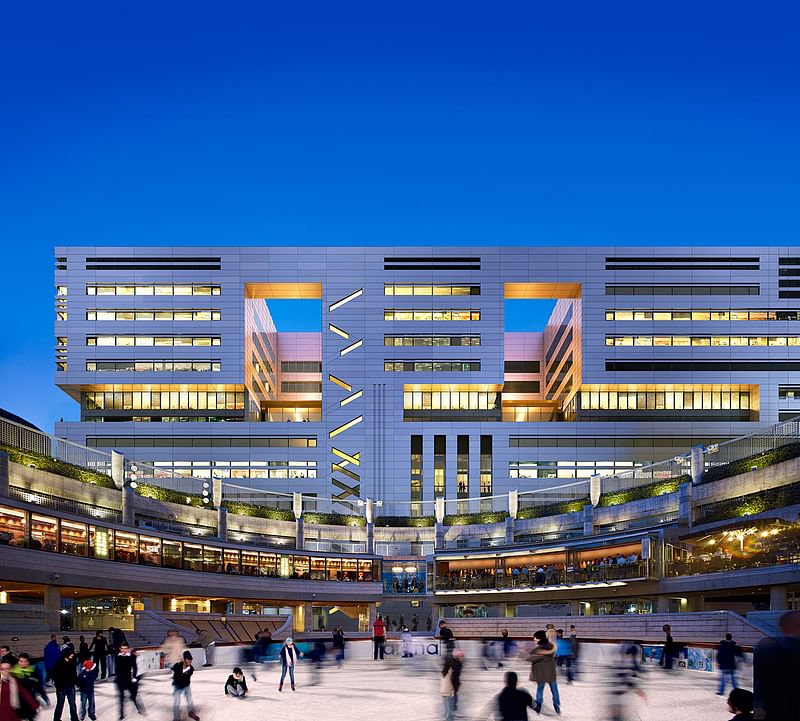
Project Description: “Housing the European trading operations of , UBS, this 13-storey building is the largest single let office space in Europe. The structure is a steel frame with concrete floors on profiled metal decking, founded on a 1.75m thick reinforced concrete raft.”
Judges’ comments: “The designers have shown how a seemingly conventional solution can be modified to embody the principles of sustainable construction.”
Award for Education or Healthcare Structures: Blavatnik School of Government – Oxford, UK.
Engineered by: Pell Frischmann.

Project Description: “The new home for Oxford University’s School of Government features high quality exposed concrete throughout. Its unusual form, established through a series of stacked, cylindrical and square volumes, creates a variety of different spaces. The whole building is designed to encourage openness and communication.”
Judges’ comments: “The judges were very impressed with both the concept and realisation of this outstanding building. The building’s form, overlaying rectangular and circular floor plates, required some imaginative structural engineering. The execution makes it look effortless and the quality of finish achieved is superb.”
Award for Pedestrian Bridges: Elizabeth Quay Bridge – Perth, Australia.
Engineered by: Arup
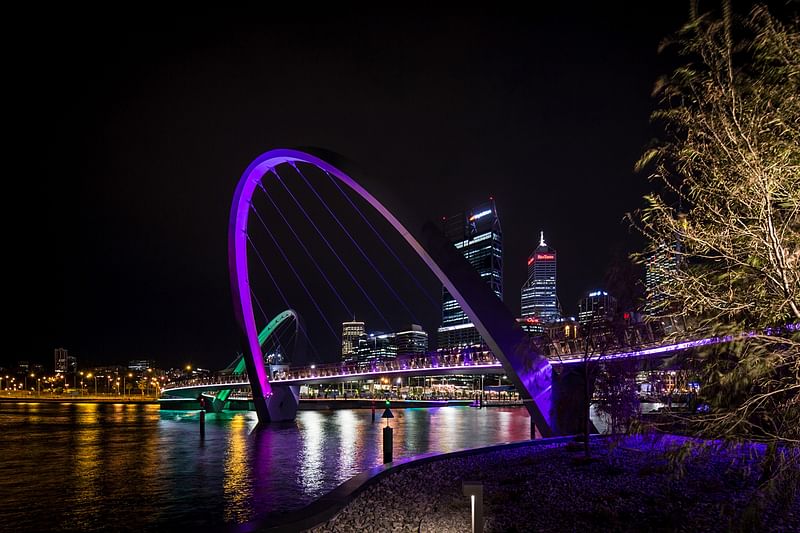
Project Description: “Elizabeth Quay is part of a bold plan to revitalise central Perth. This striking 22m high cable-stayed bridge is the project’s centrepiece feature. The design benefited from the use of a range of digital tools.”
Judges’ comments: “The judges were impressed by the contribution made by this elegant structure to the enhancement of central Perth. Successfully overcoming a number of technical challenges, the bridge will serve as a landmark for the community.”
Award for Sport or Leisure Structures: Etihad Stadium Expansion – Manchester, UK.
Engineered by: BuroHappold Engineering.

Project Description: “The project to expand Manchester City Football Club’s stadium with a new South Stand saw engineers required to modify an existing cable-net roof with complex geometry and load-paths while providing continued rain protection to fans. 85% of materials used for the expansion were locally procured.”
Judges’ comments: “A most impressive response to tricky engineering challenges that resulted in a stadium expansion with minimal spectator disruption and a complementary architectural form. A clever and seamless intervention in a geometrically complex cable net structure.”
Award for Small Projects: Formby Helical Stair – Formby, UK.
Engineered by: Webb Yates Engineers.
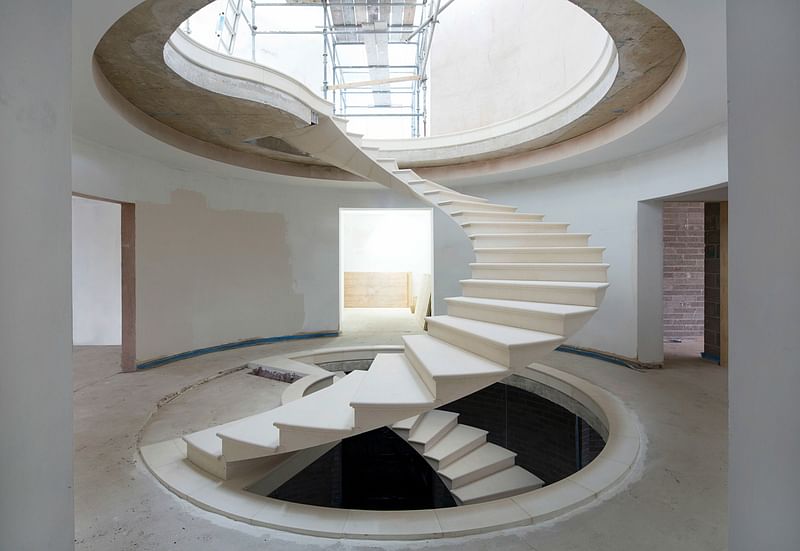
Project Description: “A breath-taking, two-storey stone staircase that springs from one landing and sweeps unsupported through 320 degrees to the next. The total weight of French Combe Brune limestone making up the stairs is approximately 6.6 tonnes.”
Judges’ comments: “The judges were amazed by the grace and audacity of this post-tensioned stone stair, which twists through space from floor to floor. The engineer has fully understood and exploited the limited tensile capacity of stone by augmenting it with just enough steel to form a wonderful hybrid.”
Award for Small Practices: Expo2015 Hive – Milan, Italy + London, UK.
Engineered by: Simmonds Studio.
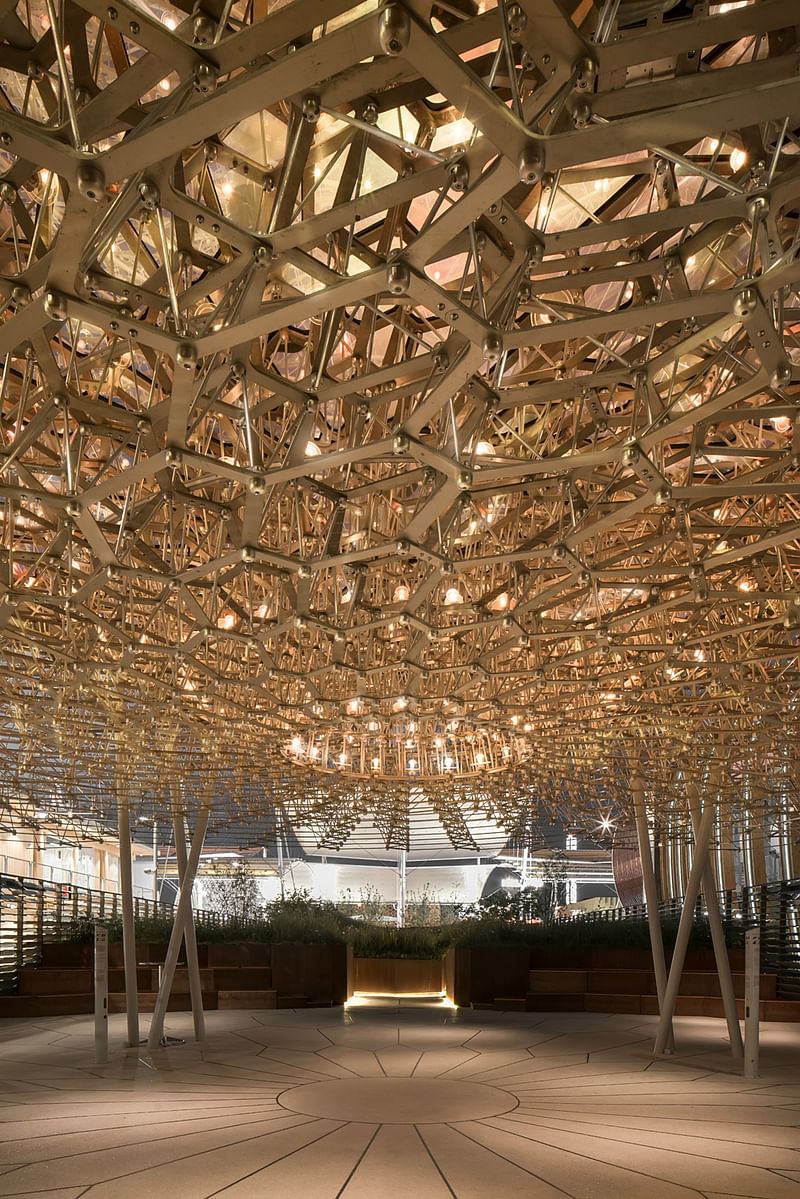
Project Description: “A highly complex sculptural structure that was the centrepiece of the UK Pavilion at the Milan Expo 2015. The Hive consists of 60,000 unique aluminium parts, formed in a structural system of 31 stacked layers of alternating radial and circumferential trusses.”
Judges’ Comments: “The judges were highly impressed by the way in which specialist material knowledge of glass and aluminium, combined with digital coding expertise, enabled a dramatic aesthetic vision to be converted into reality.”
Award for Structural Heritage: Mount Stewart House – County Down, Northern Ireland.
Engineered by: Mann Williams.
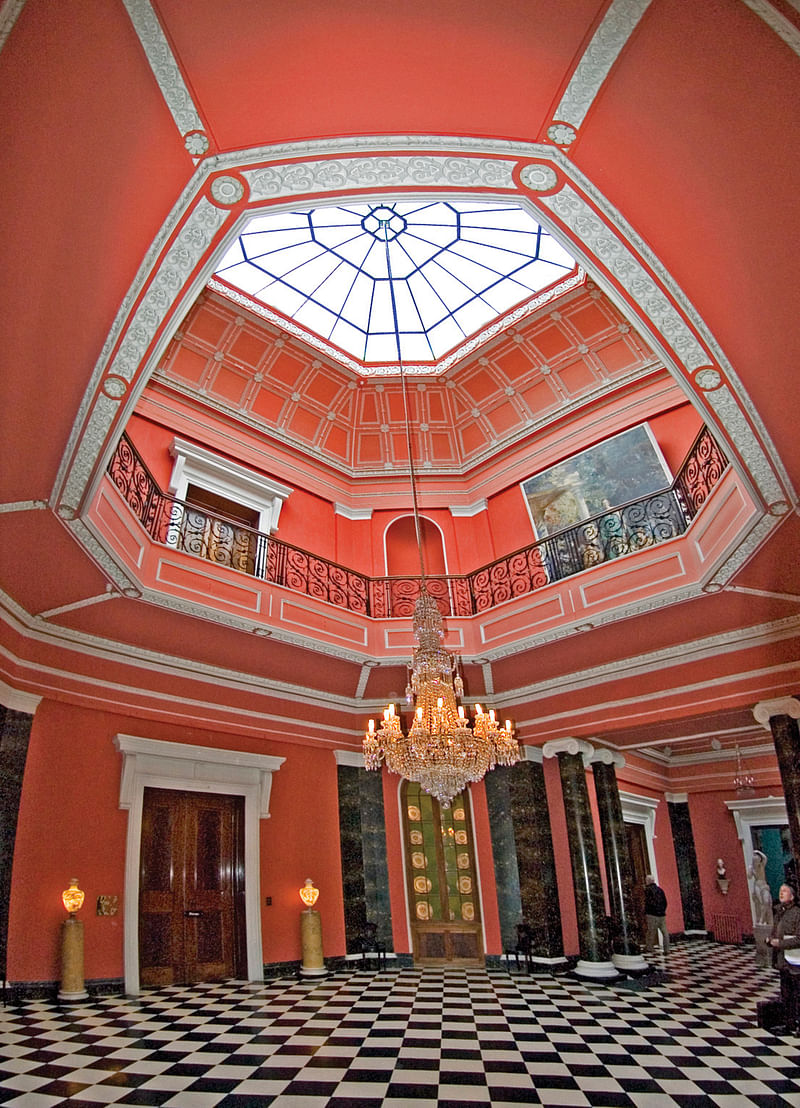
Project Description: “This fine house was in need of a thorough overhaul. Significant structural problems included the span of the joists, the sag in the gallery round the octagonal hall, and partial failure of a large timber truss.”
Judges’ comments: “Exceptional care had to be taken in correcting the various structural inadequacies without causing damage to wall and ceiling finishes. The judges were particularly impressed by the invention of a system introduced between the timber floor joists, allowing them to carry public access loads on their span.”
Award for Infrastructure or Transportation Structures: Transformation of Birmingham New Street Station.
Engineered by: Atkins/AKTII.
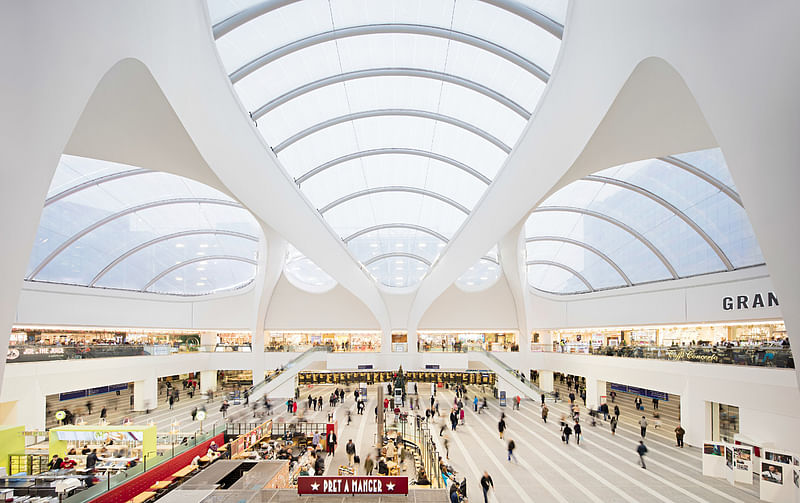
Project Description: “Birmingham New Street Station was officially re-opened by the Queen in November 2015 after £750M transformation. The new roof comprises an EFTE inflated cushion system supported off curved steel tubular arch beams, which in turn are supported off two dramatic wishbone truss arches.”
Judges' comments: “Transforming the old outdated station into a dynamic modern transportation hub with a concourse five times the size of Euston was a huge challenge. On any other site this would have been a difficult building to design and construct, but to do so within the confines of a busy active station makes this a very considerable achievement, which has been possible thanks to clever structural engineering.”
Award for Arts or Entertainment Structures: Stavros Niarchos Foundation Cultural Centre – Athens, Greece.
Engineered Expedition Engineering & OMETE.

Project Description: “A new home for the Greek National Library and National Opera, the Centre features a number of engineering innovations. A super-slender, lightweight canopy roof is raised on slender columns over the whole and carries a huge solar panel array.”
Judges' Comments: “The Judges were particularly captivated by the engineering solutions required to solve challenging seismic requirements, whilst also aiming for high socio-cultural ambitions and achieving exemplary sustainability credentials.”
Award for Commercial or Retail Structures: Torre BBVA Bancomer - Mexico City, Mexico.
Engineered by: Arup.

Project Description: “The Latin American headquarters of the bank, BBVA Bancomer, and the tallest completed building in Mexico. The architecture clearly expresses the engineering of the structure. Engineers designed for Mexico City’s earthquakes by placing the structural frame on the exterior of the envelope. This Eccentrically Braced Megaframe acts as an external protective skeleton, carrying all the building’s lateral wind and seismic loads.”
Judges' comments: “The building exemplifies close collaboration between architect and engineer, with structural criteria clearly influencing architectural concept.”
Check out previous Structural Awards coverage in the links below.
All images courtesy of the Institution of Structural Engineers.

RELATED NEWS 2016 Structural Awards shortlist highlights

RELATED NEWS Institution of Structural Engineers names Robert Halvorson as 2016 Gold Medalist

RELATED NEWS Singapore Sports Hub wins Supreme Excellence title in 2015 Structural Awards


Share
0 Comments
Comment as :